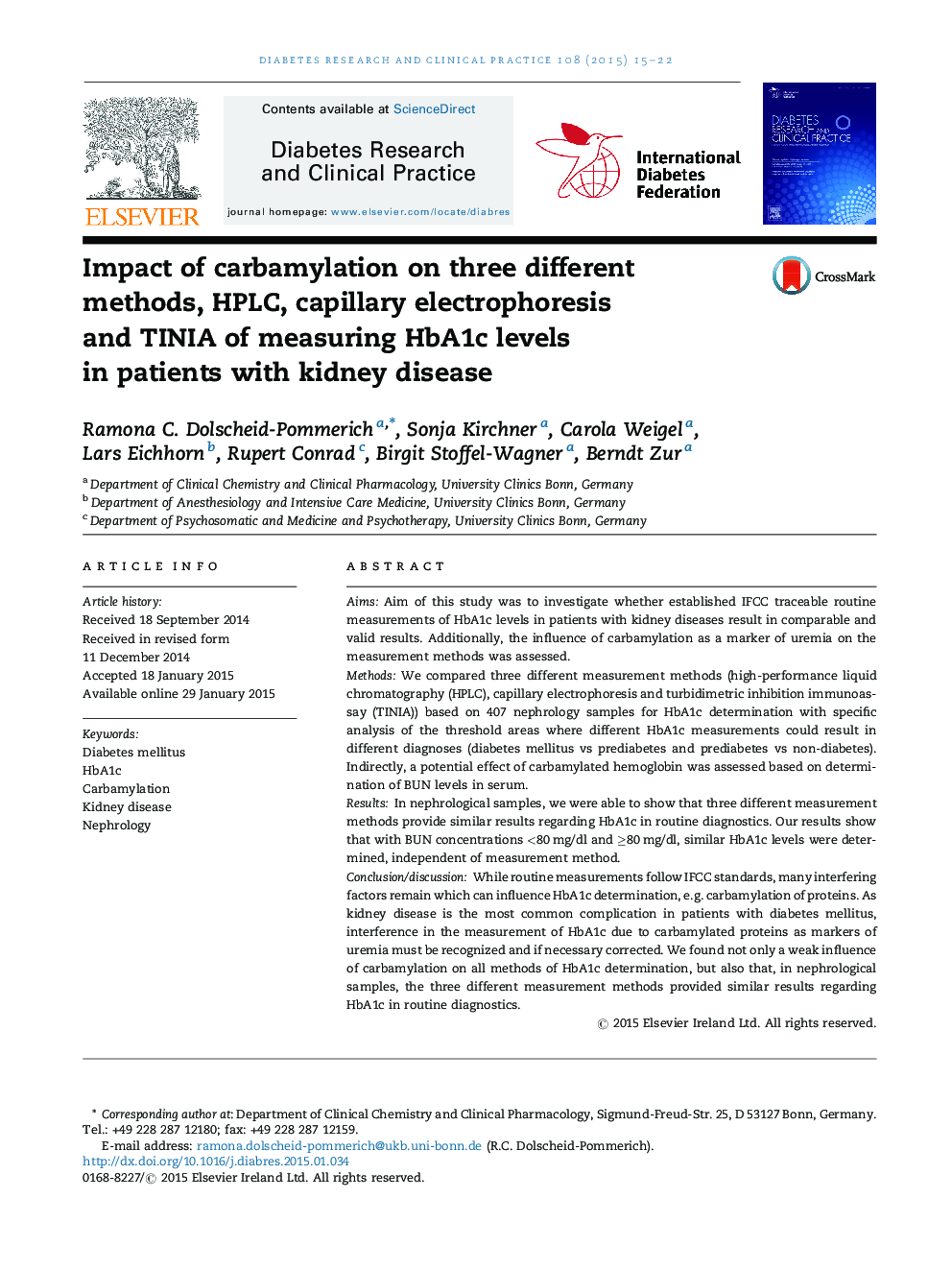| Article ID | Journal | Published Year | Pages | File Type |
|---|---|---|---|---|
| 5899330 | Diabetes Research and Clinical Practice | 2015 | 8 Pages |
â¢Comparison of three different measurement methods for HbA1c determination.â¢Based on nephrology samples, HbA1c measurements could result in different diagnoses.â¢Carbamylated hemoglobin was assessed based on determination of BUN levels in serum.â¢Weak influence of carbamylation in all methods.
AimsAim of this study was to investigate whether established IFCC traceable routine measurements of HbA1c levels in patients with kidney diseases result in comparable and valid results. Additionally, the influence of carbamylation as a marker of uremia on the measurement methods was assessed.MethodsWe compared three different measurement methods (high-performance liquid chromatography (HPLC), capillary electrophoresis and turbidimetric inhibition immunoassay (TINIA)) based on 407 nephrology samples for HbA1c determination with specific analysis of the threshold areas where different HbA1c measurements could result in different diagnoses (diabetes mellitus vs prediabetes and prediabetes vs non-diabetes). Indirectly, a potential effect of carbamylated hemoglobin was assessed based on determination of BUN levels in serum.ResultsIn nephrological samples, we were able to show that three different measurement methods provide similar results regarding HbA1c in routine diagnostics. Our results show that with BUN concentrations <80 mg/dl and â¥80 mg/dl, similar HbA1c levels were determined, independent of measurement method.Conclusion/discussionWhile routine measurements follow IFCC standards, many interfering factors remain which can influence HbA1c determination, e.g. carbamylation of proteins. As kidney disease is the most common complication in patients with diabetes mellitus, interference in the measurement of HbA1c due to carbamylated proteins as markers of uremia must be recognized and if necessary corrected. We found not only a weak influence of carbamylation on all methods of HbA1c determination, but also that, in nephrological samples, the three different measurement methods provided similar results regarding HbA1c in routine diagnostics.
